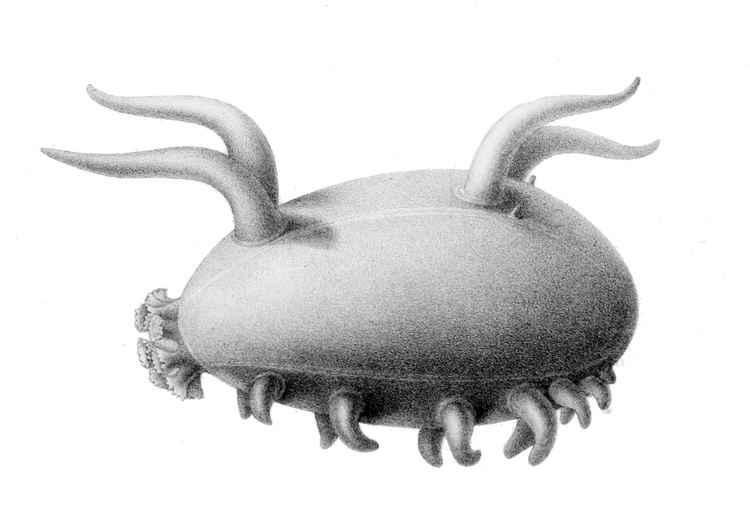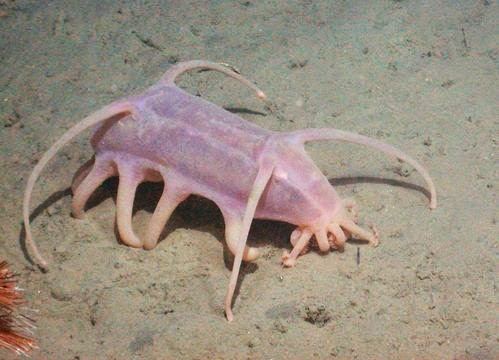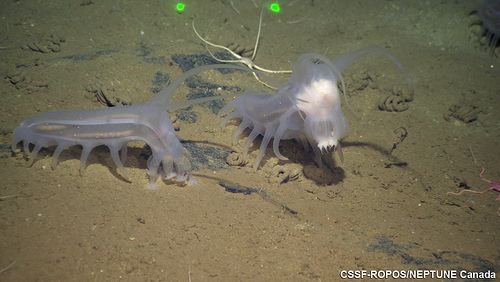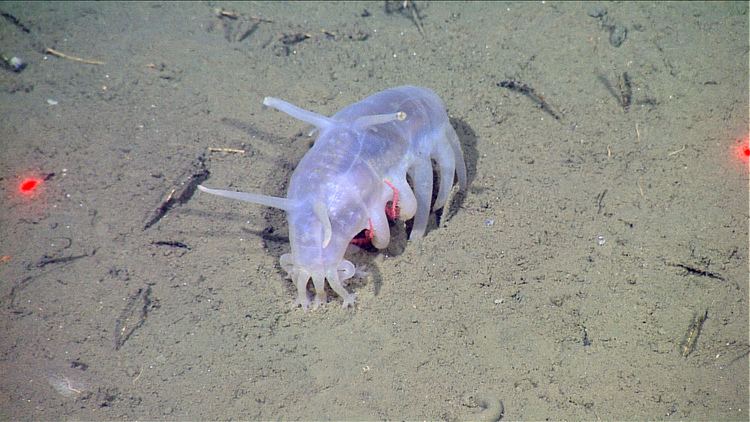Scientific name Scotoplanes | Rank Genus | |
 | ||
Similar Scotoplanes globosa, Red‑lipped batfish, Blobfish, Elpidiidae, Kiwa hirsuta | ||
Scotoplanes sea pig sea cucumber
Scotoplanes, commonly known as the sea pig, is a genus of deep-sea holothurian echinoderm of the family Elpidiidae, order Elasipodida.
Contents
- Scotoplanes sea pig sea cucumber
- Rare scotoplanes found in wilpaththu live at 8 news
- Locomotion
- Ecology
- Taxonomy
- Threats
- References

Rare scotoplanes found in wilpaththu live at 8 news
Locomotion

Members of the Elpidiidae have particularly enlarged tube feet that have taken on a leg-like appearance, and are the only instance of legged locomotion amongst the holothurians, using water cavities within the skin (rather than within the leg itself) to inflate and deflate the appendages. These legs, in conjunction with their large, plump appearance (about 6 inches/15 cm long) have suggested the common name "sea pig". There are other genera of Elpidiidae with a similar appearance that have also been referred to as "sea pigs".
Ecology

Scotoplanes live on deep ocean bottoms, specifically on the abyssal plain in the Atlantic, Pacific and Indian Ocean, typically at depths of over 1200–5000 meters. Some related species can be found in the Antarctic. Scotoplanes (and all deep-sea holothurians) are deposit feeders, and obtain food by extracting organic particles from deep-sea mud. Scotoplanes globosa has been observed to demonstrate strong preferences for rich, organic food that has freshly fallen from the ocean's surface, and uses olfaction to locate preferred food sources such as whale corpses.

Scotoplanes, like many sea cucumbers, often occur in huge densities, sometimes numbering in the hundreds when observed. Early collections have recorded 300 to 600 individual specimens per trawl. Sea pigs are also known to host different parasitic invertebrates, including gastropods (snails) and small tanaid crustaceans.
Taxonomy
The genus includes the following species:
Threats
The main threat against Scotoplanes is deep-sea trawling. A single trawler sweep can catch and kill as many as 300 Scotoplanes. Since these animals make up a substantial part of the nutrition of deep-sea predators, this bycatch represents a serious threat to deep-sea life.
